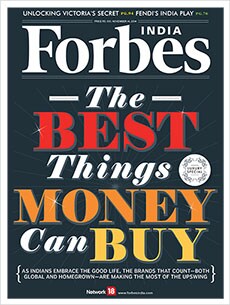
Aspirational global luxury brands descending on Indian market in huge numbers
Exposure to global luxury brands has increased like never before in India, making it a hard-to-ignore market
There was a time when Indians travelling overseas would return all starry-eyed with bags full of luxury items bought from destinations like London, New York or Dubai. Those were the days when foreign travel was almost synonymous with shop-till-you-drop. Cut to 2014, and a walk down London’s Oxford Street is no longer a ‘novel’ experience. Many of the best luxury brands are familiar names in India—from the most expensive ladies’ handbags and shoes to perfumes and watches. Malls housing those big-ticket brands are drawing consumers in droves in major Indian cities.

Consider the facts. A KPMG-Assocham study says the Indian luxury market grew at a brisk 30 percent in 2013 and will stand at $14 billion by 2016. A 2013 PricewaterhouseCoopers study on the lessons from the global retail apparel industry reveals that 42 percent of Indians polled said they were influenced by the styles and brands of celebrity cultures. Yet another report by Deloitte, The Global Powers of Luxury Goods 2014, found that in 2012, India was the fastest growing luxury market in the Asia-Pacific region, brisker than even China. Even accounting for a slowdown thereafter, India simply must figure on the global luxury map. Besides, the number of the uber rich is rising rapidly in India—with many now coming from tier-2 and -3 cities—with enormous spending power and the desire to rub shoulders with the wealthiest.
This issue of Forbes India, The Best Things Money Can Buy, takes you through the various aspects of this rapidly growing market. International names apart, we also bring you some homegrown luxury brands which have made a name for themselves.
But there are roadblocks too, with the duty structure, the problem of counterfeits, unfriendly regulations and red tape creating barriers. However, many of the biggest brands are ready to slug it out. After all, the rapid growth in the luxury market notwithstanding, Indian luxury consumption is still only at a fraction of the global market, indicating there’s more than enough headroom to grow. Evidence of this is before us as the festive season gains momentum. Happy splurging!
Best,
Sourav Majumdar
Editor, Forbes India
Email:sourav.majumdar@network18publishing.com
Twitter id:@TheSouravM
(This story appears in the 14 November, 2014 issue of Forbes India. To visit our Archives, click here.)















